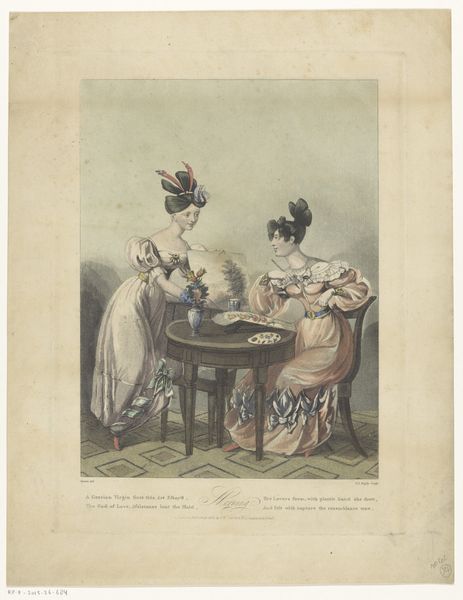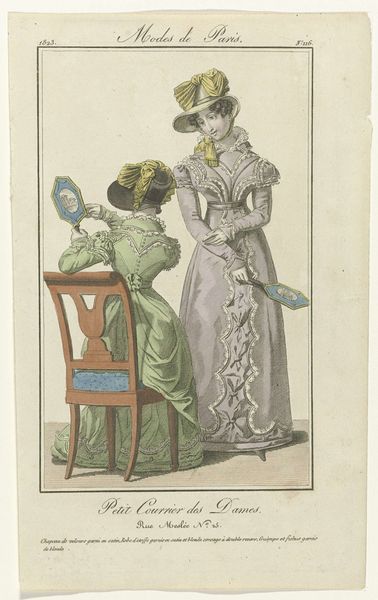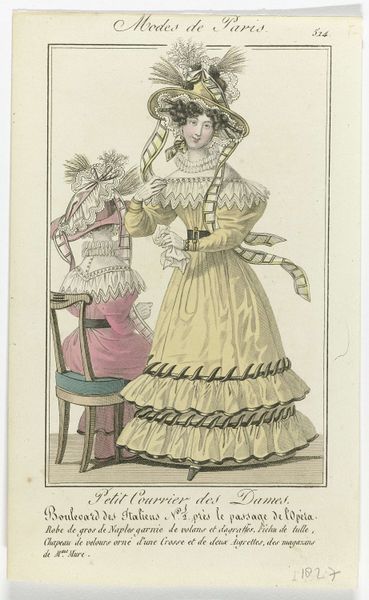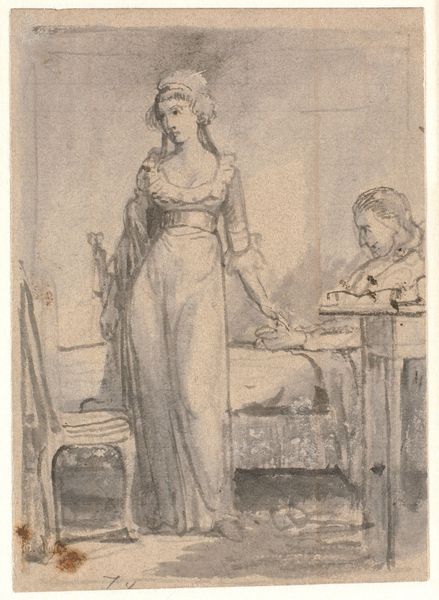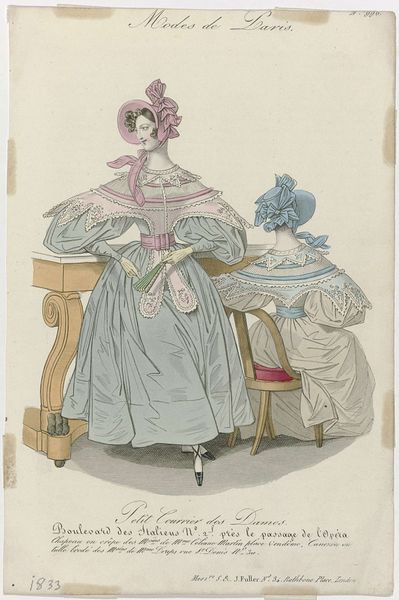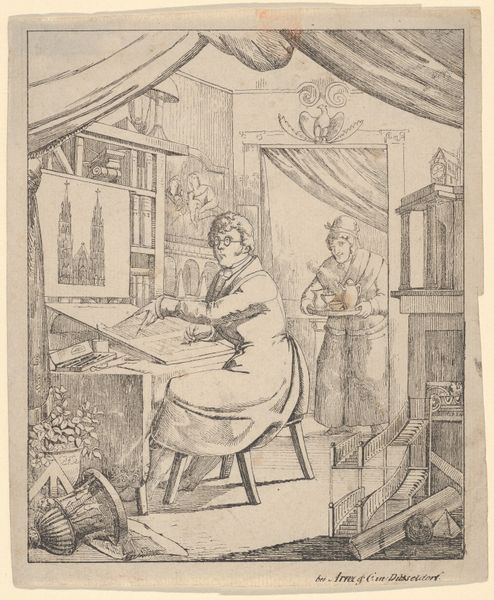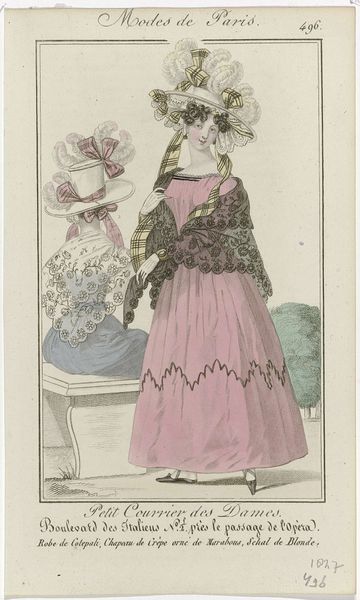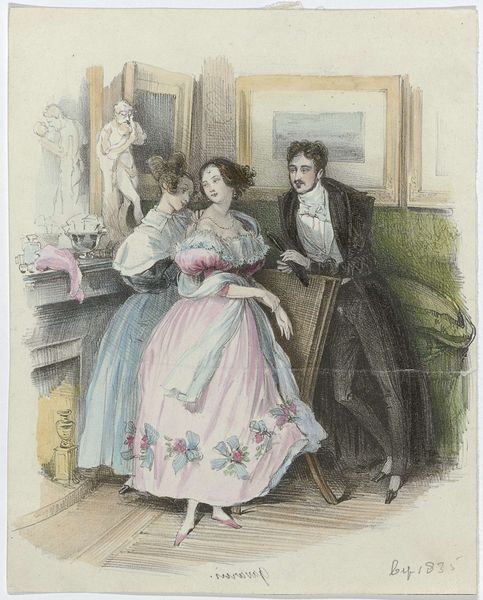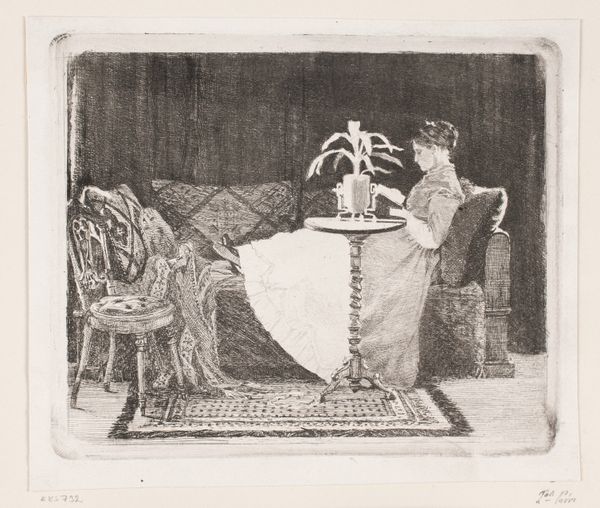
Dimensions: height 270 mm, width 182 mm
Copyright: Rijks Museum: Open Domain
This undated print of ‘Le Miroir Parisien’, a French fashion magazine, shows us a scene of domestic femininity, likely from the late 19th century. The image, produced for a publication that literally translates to ‘The Parisian Mirror’, presents two women within the codes of bourgeois domesticity: one is sewing, another is holding a doll, perhaps for her daughter. The sewing machine itself is emblazoned with the name "EBRIOM", possibly an upscale brand. Fashion magazines like 'Le Miroir Parisien' emerged as powerful institutions that shaped desires, dictated standards of beauty, and reinforced class distinctions. By examining these magazines, we can discern the socio-economic conditions that shaped artistic production and consumption. We can explore the ways in which these images either upheld or subtly challenged existing social norms. Historians can use sources like subscription records, advertisements, and editorial content to understand the readership and the wider cultural impact of magazines such as ‘Le Miroir Parisien’. This helps us understand the political role of imagery and the contingent nature of taste.
Comments
rijksmuseum about 2 years ago
⋮
Starting from the 1850s, fashion magazines became more affordable and acquired a wider readership. The invention of the sewing machine around 1850 made it easier for people to make their own clothes. Ready-made garments were now also on offer, with fashion plates providing vendor addresses, such as the Maison Gagelin in Paris.
Join the conversation
Join millions of artists and users on Artera today and experience the ultimate creative platform.


